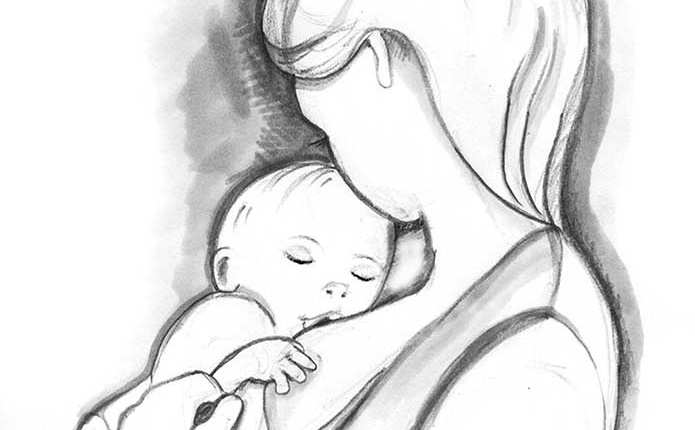Bonding / Bonding reflex
The bonding reflex occurs in the first 45 minutes after birth, when the baby is lying on the mother’s stomach.
Touch is the root. Being touched, caressed and massaged is food for the child. Food that is as important as minerals, vitamins and proteins. Food that is love.
F. Leboyer
Explanations Bonding / Reflex of Bonding:
Bonding supports the feeling of trust and security both physically and emotionally, provides a basic trust and establishes the feeling for the body center on the physical level. It has a significant impact on future physical and emotional security and basic trust. All is well with the world! It must be anchored on the physical level right after birth. Thus kinesthetically the feeling for the center of the body is stimulated.
The baby should see the mother and her smile, hear her voice and be placed at her breast. The umbilical cord should be cut only when the pulsation in it has stopped. This procedure reduces the stress of birth and reduces adrenaline.
During birth, both the mother and the baby secrete more oxytocin than very likely ever again in the life after. Oxytocin is a hormone produced in the hypothalamus and stored in the posterior pituitary. From there, it helps stimulate specific smooth muscle in the breasts, which causes milk transfer to the milk ducts of the breasts. It is also involved in the development of the milk ejection reflex during breastfeeding.
It is also released during orgasm in both men and women, stimulating the penis to ejaculate and the vagina to contract. Oxytocin release is thought to act on the CNS during orgasm with the goal of experiencing sexual satiation.
Oxytocin is also called the “cuddle substance” because it contributes to feelings of emotional bonding.
Oxytocin regulation during labor
- Contraction of labor causes the baby’s head to enter the birth canal.
- Oxytocin increases the expansion of the cervix.
- Stretch receptors in the cervix trigger sensitive nerve impulses to the hypothalamus and posterior pituitary.
- The concentration of oxytocin in the blood increases.
- It acts on the smooth muscles of the uterine wall.
- Uterine contractions occur as a result of oxytocin stimulation.
- The baby is pushed further into the birth canal, and dilation of the uterus is increased.
- After birth, it helps the uterus regain its prenatal size and shape.
If the reflex is not fully established, the following abnormalities may occur:
They can manifest themselves in two different ways:
- The child does not like to be alone,
does not let go of the mother,
demands attention,
is ashamed and cries a lot.
He has no confidence in his own feelings,
has fear of failure and
is strongly dependent on social recognition.
He denies himself and his environment. - The child goes into rejection of the world and of himself.
It tends to aggressiveness and hostility,
shows easily provocative behavior,
is insulting, but then again unforgiving.
It is resentful, cannot forgive and has
has difficulty with authority.
It assumes roles in the social, such as the scapegoat, the lost child, or the family clown.
The child learns because he needs recognition, but not because he is interested in the material.
Emergence: 45 – 60 minutes after birth.
Depending on the mother’s attention, bonding may still develop up to 10 months.
Duration: Lifelong
Integration: Necessary to be able to form other relationships. Important to give and receive unconditional love.
More interesting knowledge…
… about early childhood reflexes, as well as concrete exercises for subsequent integration and centering can be found in my course BalanceHIRO®.


